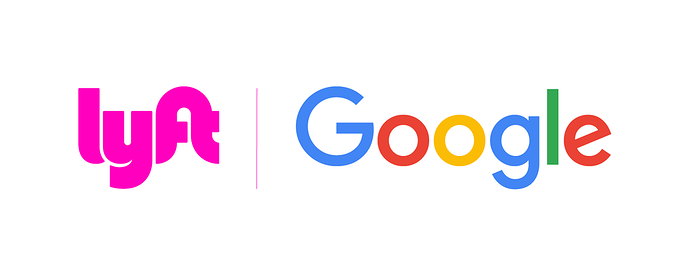Alphabet is Google’s holding company and one of Lyft’s major investors. It recently invested a further $1 billion in cash through its investment company CapitalG. This will bring Lyfts total investment funding to $11billion and sees the addition of David Lawee, a CapitalG partner on the board of Lyft. This investment is not just based on Lyfts constant and solid performance, but also on the major initiative Lyft has invested in with their self-drive ecosystem project.
Lyft’s board of directors includes:
Valerie Jarrett (former presidential advisor)
Ben Horowitz (Co-founder of Andreessen Horowitz)
Dan Ammann (President of GM)
Jonathan Christodor (Icahn Capital Representative)
Sean Aggarwal (Investor and former CFO of Trulia)
Hiroshi Mikitani (Rakuten's Representative)
Ann Miura-Ko (Floodgate Fund's Representative)
Logan Green (Lyft Co-founder)
John Zimmer (Lyft Co-founder)
David Lawee (CapitalG Partner and Representative)
Alphabets decision
The reason Alphabet decided to invest a further $1 billion is not lost on this report. First of all, Alphabet has already invested five hundred million dollars in Lyft. Lyft has not gone all crazy and global like Uber, but maintained a steady vision and focused on increasing its market share through a solid relationship with its drivers and passengers.
Lyft has reached 500 million rides and continuing to grow, and this solid approach and steady business model attracted automotive industry partnerships and investment. This old-school company investment is more in line with solid industry and not venture capital.
This can be seen when comparing Lyft to Uber in the self-drive development arm of projects and investors:
Automotive Partnerships
Lyft: Drive AI, Ford, GM, Jaguar, Nutonomy, and Waymo
Uber: Daimler, Volvo (Tata and Toyota as Uber investment only)
Another reason for Google's sudden interest in self-drive cars and Lyft was recent in-house problems in Uber. The alphabet was in a rather nasty legal bout with Uber after their joint project in self-driving cars didn't work-out, or let's say did not reach agreements between the two sides. David Drummond, who is the Chief Legal Officer at Alphabet, and their representative on Uber's board of directors, resigned the post.
Alphabet is working closely with Lyft via their self-drive company, Waymo, to develop an on-demand network of driverless rideshare cars.
Government
What might be interesting is the government's recent approval to pass a law that overrides state legislature and allows driverless cars to produce and insert up to 25,000 cars with limited safety compliance in every state as well as to raise the number to reach 100,000 per state in three years' time.
The combined efforts of the automotive industry lobby and Alphabet must have made a special impression on all the house representatives. So, it is a clear picture for self-driven car development partnerships to proceed and test out their cars.
Trust Issues
Another key area that is constantly in flux is trust in development issues. Partnerships are not only based on success but trust as well. KPI's (Key Performance Indicators) are essential in these kinds of partnerships, and since there are many companies involved in self-drive technology, it is obvious that partnerships will not be Catholic marriages. In fact, Lyft and GM have a strong relationship but loose partnership. GM and Lyft can both decide on which companies they want to partner with when implementing the self-driving network.
Shifting balances
The automotive worlds are a constant shift and flux; it is a global industry with most companies owning sites in many countries. This gives them insight and investment in many local ventures, some of which are anonymous and un-identified by global media coverage.
On the other hand, some major partnerships shift partnership holdings and bonds, such as GM's investment with Cruise, which weakened the link between GM and Lyft. The GM investment in Cruise shows Lyft that GM is working in parallel to Lyft in developing an in-house technology for the driverless car. At the same time, it could be a gambit by both companies to reach the goal line with a hybrid development, working together behind the scenes to create one supermodel.
Neural Networking
Artificial intelligence and machine learning are approached through neural networking, and these networks are all different, the algorithms created make for different results. This does not mean one system is better than the other; it just means that until a really good system comes along and proves itself, will require a lot of teamwork and cross-sector sharing, which is not usually done. In GM and Lyft's case, together with Alphabet, this could very well be the case.
The Lyft Model
Lyft has partnered with some competing companies; it is obvious when looking at the names of their partner companies as well as board members. These partnerships give Lyft a lot of incoming information, and this data is also traded between companies on occasions when breakthrough as are not foreseen. A lot of academic work is also being reported in peer-review articles and media coverage. While information is the real commodity, with so many partnerships under one umbrella, it is obvious that Lyft places a lot of energy and focus to succeed in this area.
The Lyft Platform
The reason Lyft is focusing a great drive on driver-less cars is to prepare for the day when they can maximize profits by working with fleet owners and not drivers. Fleet owners will only be in charge of maintenance, insurance, and fuel. There will no longer be that "bothersome" driver demanding attention and more money.
Conclusions
The bottom line: the moment driverless cars come online, millions of drivers around the world will be out of business. (including taxi and limousine drivers). The government's involvement has already shown the stranglehold these lobbies have on Capitol Hill.

